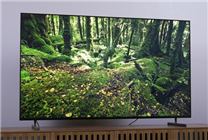Enhance Your TV Picture Quality: A Comprehensive Guide
- Optimize Your Viewing Experience: Learn how to improve the quality of your TV pictures without costly equipment upgrades.
- Select High-Quality Sources: Discover how the resolution and format of your content affect the final viewing experience.
- Environment Matters: Explore how to adjust your viewing environment to enhance picture clarity and color.
In today’s digital age, television remains the cornerstone of home entertainment. For many, unwinding on the sofa, turning on their TV, and getting lost in captivating programs is the ultimate form of relaxation. However, nothing dampens that experience like fuzzy screens and distorted colors. Fortunately, enhancing your TV’s picture quality doesn’t necessarily require buying the latest model. This article provides practical, cost-free tips to elevate your viewing experience significantly.
Selecting Quality Film Sources: The First Step
Think of your TV as a "translator," rendering content into images for your enjoyment. Therefore, the quality of your film source plays a crucial role in determining how well your TV performs. Unfortunately, many people invest in high-end televisions yet overlook source quality, much like trying to drive a luxury sports car on a bumpy road.
Focus on Resolution
Resolution directly impacts image quality. Higher resolutions contain more pixels and richer detail, enhancing the visual experience. For instance, 4K resolution allows for astonishing clarity in nature documentaries, making details like the veins of leaves or the texture of animal fur come alive. To make the most of your TV, prioritize high-resolution content. Streaming services such as popular video platforms offer various resolutions; when your internet speed and TV capabilities permit, opt for the highest quality available.
Consider Source Format and Encoding
In addition to resolution, the format and encoding of your media also influence playback quality. Common formats like MP4, MKV, and AVI can dictate compatibility and performance. MKV, for example, supports multiple audio, video, and subtitle tracks, making it a versatile choice.
When it comes to encoding, H.265 is superior to H.264, offering better compression while maintaining image quality. Therefore, when choosing videos, pay attention to the format and encoding to ensure you select the best possible source.
Explore Free High-Definition Resources
While many streaming platforms charge for HD and 4K content, there are still numerous options for free high-definition viewing. Many TV station websites and mobile apps provide free access to high-quality programs.
For example, by connecting to a DTMB terrestrial digital TV network antenna, viewers can access several HD channels without cost. Conducting online research can reveal supplementary free HD resources to expand your viewing options.
Optimize Your Viewing Environment
The environment where you watch TV greatly influences picture quality. A room flooded with sunlight can cause reflections that obscure details, while improper lighting can lead to eye fatigue, negatively affecting your overall experience.
Control Ambient Light
Ambient light affects how you view your TV effectively. Mitigating reflections is crucial for maintaining contrast and clarity. During daylight, pull curtains to block direct sunlight; at night, use soft, indirect lighting to create a comfortable atmosphere. High-end TVs with advanced screen coatings can also minimize reflections, allowing for optimal image clarity even in bright conditions.
Adjust Viewing Distance and Angle
The distance from your TV screen and the angle at which you view it are critical to your viewing experience. Ensuring that you are at the right distance allows for better detail appreciation and reduces visual strain. A typical formula for calculating the ideal viewing distance is:
- Viewing Distance (cm) = Screen Diagonal (inches) x 2.54 x 3.
For instance, a 55-inch TV requires a viewing distance of around 4.19 meters. Maintain eye level with the screen’s centerline to prevent deformation and color distortion, ensuring the best picture quality.
Utilize TV Settings for Optimal Quality
Modern TVs come equipped with multiple settings that can be adjusted to enhance picture quality. However, the factory settings are not always the most effective.
Choose the Correct Image Mode
TVs often offer various modes such as standard, movie, and game modes. Selecting the appropriate mode based on content type can yield significant improvements in viewing quality. For movies, switching to movie mode often provides a richer and more cinematic experience.
Fine-Tune Basic Image Parameters
Manual adjustments to various image parameters can further boost picture quality. Adjusting brightness, contrast, color temperature, and saturation can help achieve an optimal viewing experience:
- Brightness: Begin around 50% and adjust based on personal preference and room ambiance.
- Contrast: A starting point of 60% can enhance photo depth without oversaturating.
- Color Saturation and Temperature: Experiment with these settings for the most natural look based on your visual preferences.
Regular Maintenance for Consistent Quality
Just as a car requires maintenance, so does your TV. Regular care can ensure that picture quality remains high over time.
Clean the Screen
Dust and fingerprints can significantly diminish picture quality. Use a soft microfiber cloth to clean your screen, avoiding alcohol-based cleaners that could harm the surface.
Update Firmware
Keeping your TV’s firmware updated can resolve performance issues, improve quality algorithms, and enhance overall capabilities. Check for updates regularly in the settings menu to ensure optimal functionality.
By applying these straightforward strategies—from selecting high-quality content to optimizing your viewing environment and adjusting settings—you can significantly elevate your TV’s picture quality without spending any extra money. Enjoy a clearer, more immersive viewing experience at home, enhancing both relaxation and entertainment.








